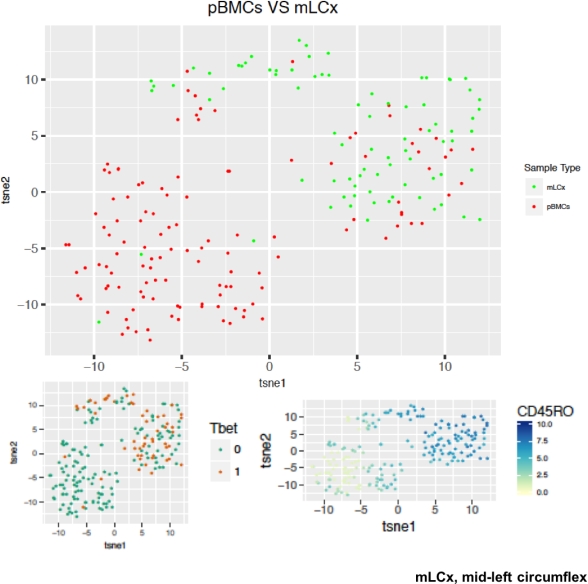Single-Cell Analysis of Graft Infiltrating T-Cells in Cardiac Allograft Vasculopathy
Medicine, Columbia University Medical Center, New York, NY.
Meeting: 2018 American Transplant Congress
Abstract number: 404
Keywords: Graft arterlosclerosis, Heart transplant patients, T cell clones, T cell graft infiltration
Session Information
Session Name: Concurrent Session: Biomarkers, Immune Monitoring and Outcomes: Basic
Session Type: Concurrent Session
Date: Tuesday, June 5, 2018
Session Time: 2:30pm-4:00pm
 Presentation Time: 2:42pm-2:54pm
Presentation Time: 2:42pm-2:54pm
Location: Room 602/603/604
Background: Cardiac allograft vasculopathy (CAV) remains a leading cause of death after heart transplant.T-cells are thought to play a central role, yet the mechanism by which they do so is incompletely defined. Most studies have examined graft infiltrating T-cells at the population level, with minimal information about individual clones. We sought to characterize individual T-cells and identify the functional phenotype of clones expanded in situ through T-cell receptor (TCR) sequencing. Methods: Graft infiltrating T-cells are being examined from coronary arteries and endomyocardium isolated during re-transplant for CAV and compared to the patient's peripheral blood mononuclear cells (PBMCs). After enzymatic digestion, T-cells are i) index sorted ii) analyzed using 13-colour flow for surface markers (eg.CD4, CD8, CD45RA/RO, CTLA4) and iii) characterized using RT/PCR with primers for 16 functional markers (eg.T-bet, GATA3, BCL-6, IFNγ, TGFβ). In a simultaneous reaction, the individual TCRs are sequenced. Data are analyzed using t-distributed stochastic neighbor embedding (t-SNE). A total of 5 cases are being examined. Results: We have already phenotyped and sequenced 204 T-cells (123 PBMCs and 81 circumflex coronary; LCx) from one case. Using t-SNE analysis the PBMC and LCx T-cells clustered discretely (Figure 1). Coronary T-cells mainly expressed T-bet and IFNγ consistent with a Th1 phenotype. In contrast to the CD45RA+ predominance in peripheral blood, most coronary T-cells were CD45RO+. FOXP3+ Tregs and RORγC+ Th17 cells were virtually absent. Conclusions: Using a unique strategy combining functional phenotype with TCR sequencing and t-SNE analysis, we identified a discrete Th1 memory T-cell population amongst graft infiltrating T-cells in CAV. These results are being combined with next generation sequencing to characterize expanded T-cell clones in different locations (coronary and endomyocardium), and over time (from archived biopsies). We will expand this analysis to a larger cohort of specimens obtained during re-transplant for end-stage CAV.
CITATION INFORMATION: Habal M., Myung A., Yan H., Rao S., Lin S., Colombo P., Marboe C., Restaino S., Han A., Farr M., Zorn E. Single-Cell Analysis of Graft Infiltrating T-Cells in Cardiac Allograft Vasculopathy Am J Transplant. 2017;17 (suppl 3).
To cite this abstract in AMA style:
Habal M, Myung A, Yan H, Rao S, Lin S, Colombo P, Marboe C, Restaino S, Han A, Farr M, Zorn E. Single-Cell Analysis of Graft Infiltrating T-Cells in Cardiac Allograft Vasculopathy [abstract]. https://atcmeetingabstracts.com/abstract/single-cell-analysis-of-graft-infiltrating-t-cells-in-cardiac-allograft-vasculopathy/. Accessed December 17, 2025.« Back to 2018 American Transplant Congress
